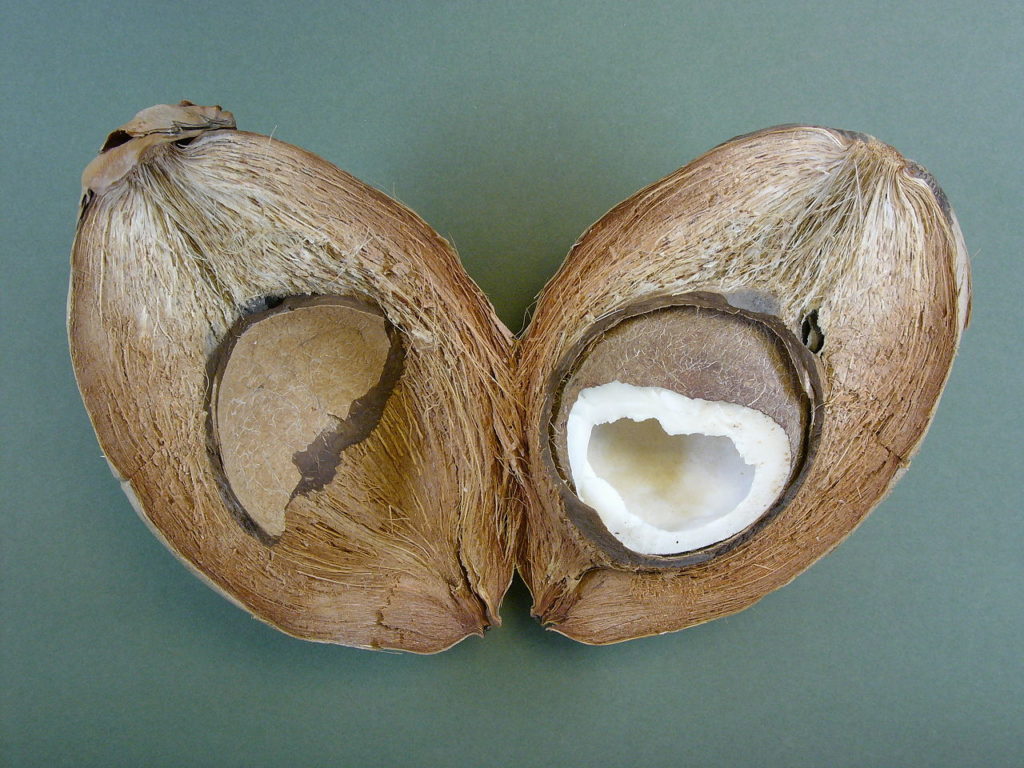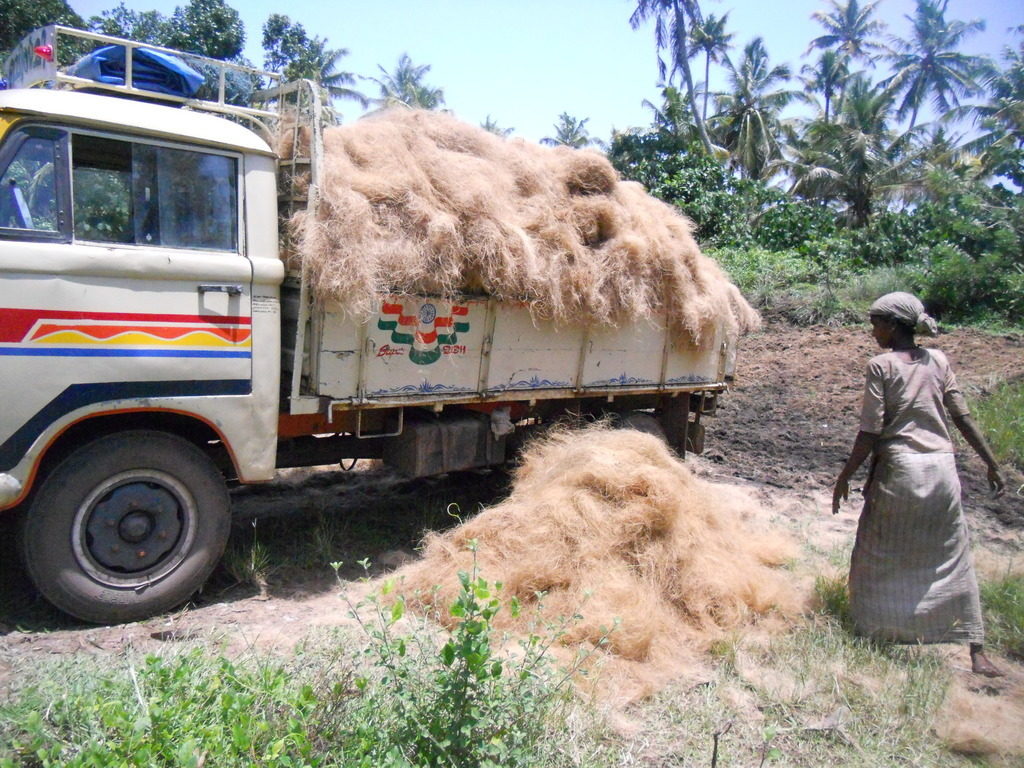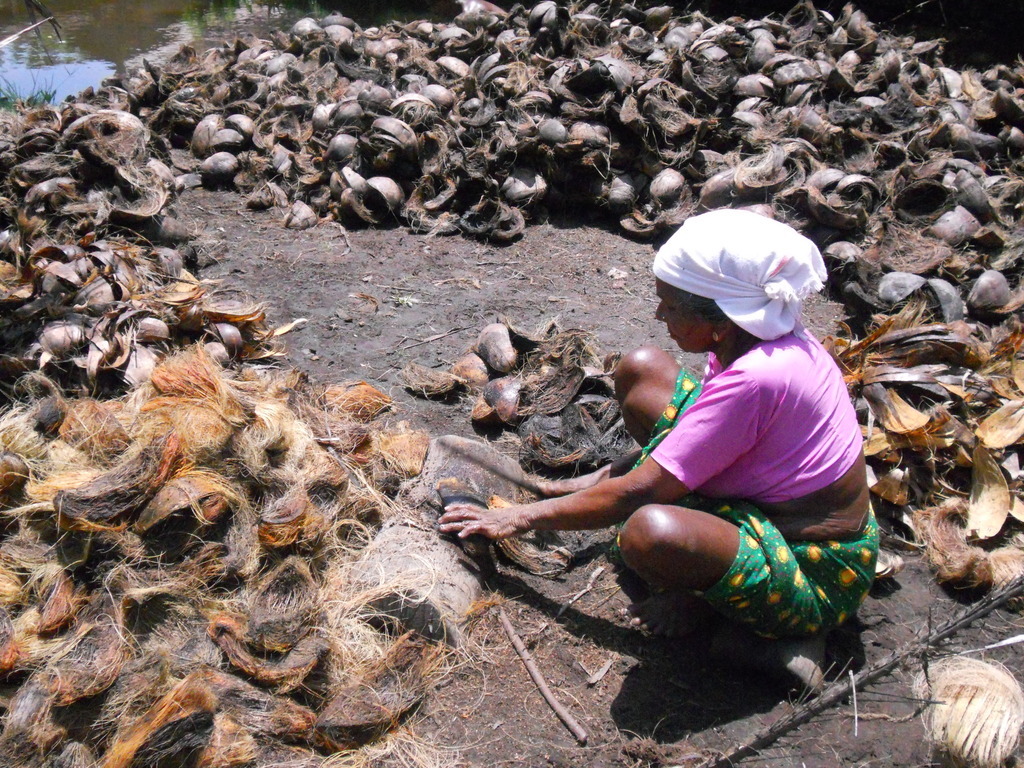Coir is the fibrous material found between the hard, internal shell and the outer coat of a coconut. It is found in India, Sri Lanka and Southeast Asia . Fully ripe coir is brown, but coir can also be harvested unripe, when it is still white or light brown. Only 15% of the husk fibers that are harvested in India are actually recovered for use.
Quick properties
- longest life of all natural fibers, very durable
- mostly inflammable
- salt water resistant
- highly resistant to abrasion
- strong and nearly impervious to the weather
- insensitive to fungal and bacterial infestation and prevents dust mites, bed bugs, etc. due to moisture resistance
- brown coir is Strong and highly resistant to abrasion
- light brown and white coir is softer, and less strong than brown coir
Quick Fiber Facts
- fibers range in leghth: 4-12 in (10-30 cm)
- fibers that are shorter than 8in (20cm) are called, mattress fiber
- fibers that are longer than that are called bristle fibers
- a 10-oz (300-g) coconut husk yields about 3 oz (80 g) of fiber, one-third of which is bristle fiber
Uses
- used for floormats, doormats, brushes and mattresses, agricultural twine, and geotextiles
- brown coir is used in upholstery padding, sacking and horticulture
- white coir is used for making finer brushes, string, rope and fishing nets
Potential Uses
- coir fiber as a thermal insulation material for low temperature usage
Processes
- separate the fibrous layer of the fruit from the hard shell and let it dry.
- look up how to make process coir at madehow


More Information
